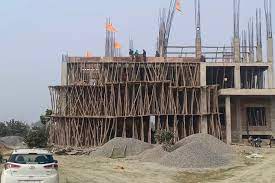
Ram temple in ayodhya signifies that "land is costlier than gold"...

Ram surat Verma expresses regret for his 2019 land sale choice. A farmer in Takpura village, in the ayodhya district of Uttar Pradesh, north India, around 155 km (96 miles) from Lucknow, the state capital, sold his 1.55 acre (0.6 hectares) of land to a local property dealer four years ago, and he received 25 million rupees ($300,000).
The 65-year-old thinks that if he had waited until now to make his choice, he would have received at least ten times that sum. Here, land is more expensive than gold, with prices rising since the supreme Court's 2019 ruling authorizing the construction of a ram temple. I erred by selling my farm prior to the verdict. Verma said Al Jazeera, "I could have gotten a much better price than what I got when I delayed the land deal."
Verma has not yet decided whether to sell the remaining 4.65 acres (1.88 hectares) of his land holding, which is located 7 km (4.3 miles) from the temple. "Every day, buyers and real estate agents swarm around my house, offering me attractive prices for the land, but I promise not to make the same mistake twice. I'd definitely get paid more if I waited," he remarked. Verma is not the only one who is holding off on selling his land in order to wait and see. In the ayodhya district and its surrounding territories, thousands of farmers and landowners are anticipating exponential values for their land, which is in high demand primarily for the construction of commercial properties.
After India's top court decided on november 9, 2019, to support the construction of a temple dedicated to the Hindu god ram at the 2.77-acre (1.12-hectare) disputed site in ayodhya, the real estate market saw a surge. In addition, Muslims living close to ayodhya were given a separate 5 acres (2 hectares) of land by the court to construct a mosque.




 click and follow Indiaherald WhatsApp channel
click and follow Indiaherald WhatsApp channel